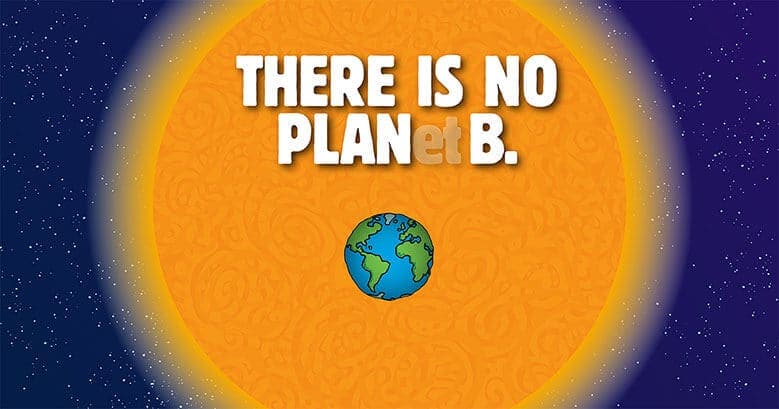
What do microbes, seaweed and scientists all have in common?
You may not have guessed but …. we are working with all of them to tackle our carbon emissions! While microbes and seaweed don't seem an obvious first port of call, we are working hard to reduce our emissions and will try whatever it takes!
Climate change is the single biggest threat to our planet. As makers of ice cream we know that we are part of the problem, but we also believe we can be part of the solution and have committed to ourselves and our fans to be a catalyst for solutions, both within our business and at the policy level.
From cow to cone, our business has a sizable carbon footprint even though we have been working hard over the years to reduce it. From solar power and the Chunkinator (it turns ice cream waste into clean energy), to being one of the first companies to adopt Science Based Targets, we do our best to tread as lightly on the planet as we can.
We get a lot of questions about whether we are walking the talk. Fair enough! As a starting point we want to let you in on 5 of the weird and wonderful ways we have been tackling emissions over the years...
-
1. Seaweed & Soil
We know the milk and cream used in our dairy ice cream is the single largest source of our emissions. About half of our carbon footprint in the whole life cycle of our product comes from dairy emissions so tackling this is key to reducing our overall emissions.
To do this, we partner with the family farmers that produce our dairy and work with them to make their farms more environmentally friendly and sustainable. For example, we help them to adopt new farm practices, like crop rotation, cover cropping, and no till, to promote healthy soil that could hold more carbon in the soil. We also work closely with universities and invest in technologies and research trials. One of these projects even included trying seaweed in the cow's diets to see if that reduces the amount of methane they produce.
-
2. Chunkinator
Aside from sounding like a transformer, our Chunkinator is pure magic (science). It made Ben & Jerry’s the first ice cream company in the world to power one of its plants using ice cream byproducts. The Chunkinator’s real name is the BIOPAQ®AFR Biodigester (catchy!) and it’s an anaerobic flotation reactor. The tank holds 24 billion natural micro-organisms whose job is to turn waste and wastewater into biogas that helps run the plant. The Chunkinator combined with solar panels at our factories are just a few of the way that we are paving our path to a renewable future.
-
3. Science-based targets
Ben & Jerry knew best when it came to putting chunks in their ice cream, scientists know best when it comes to carbon emissions! Our carbon reduction work is guided by our greenhouse gas emission reduction goals, part of the Science Based Targets Initiative (SBTi), an independent third-party standard. This means that these targets help us to ensure that we are playing our part to keep the global temperature rise below 1.5ºC.
Our approved science-based targets are:
* 100% renewable energy by 2025;
* 40% reduction in greenhouse gas intensity by 2025; and
* 80% reduction in greenhouse gas intensity by 2050.
-
4. Non-Dairy Deliciousness
Our non-dairy options have about half the carbon footprint of our dairy pints, so it makes sense for us to invest in and encourage our fans to try our delicious non-dairy flavours. If you haven't already, get out there and try them. Keep an eye out for some of the flavours you love (HELLO cookie dough!) launching in Oz in non-dairy over the coming months.
-
5. Using our voice for change
As well as our work to reduce the greenhouse gas footprint of our business and meet our Science Based Targets, we’re also fierce advocates for policies that rapidly decarbonize the world. We will continue to use our voice as a company and the connection we have with you, our fans to advocate for the following policies:
* Putting a price on carbon;
* Reducing carbon emissions (which means reducing fossil fuels) by at least 45% by 2030;
* Transitioning to 100% renewable energy by 2050;
* Divesting fully from the fossil fuel industry;
* Stopping deforestation of old growth tropical forests;
* Adopting regenerative agriculture practices that restore and maintain soil health and sequester carbon; and
* Ensuring support for developing countries’ mitigation and adaptation.
Find out more about our climate justice work here. Want to know more about all the nitty gritty details about how we are reducing our carbon emissions? You can read our most recent social and environmental impact report here.


